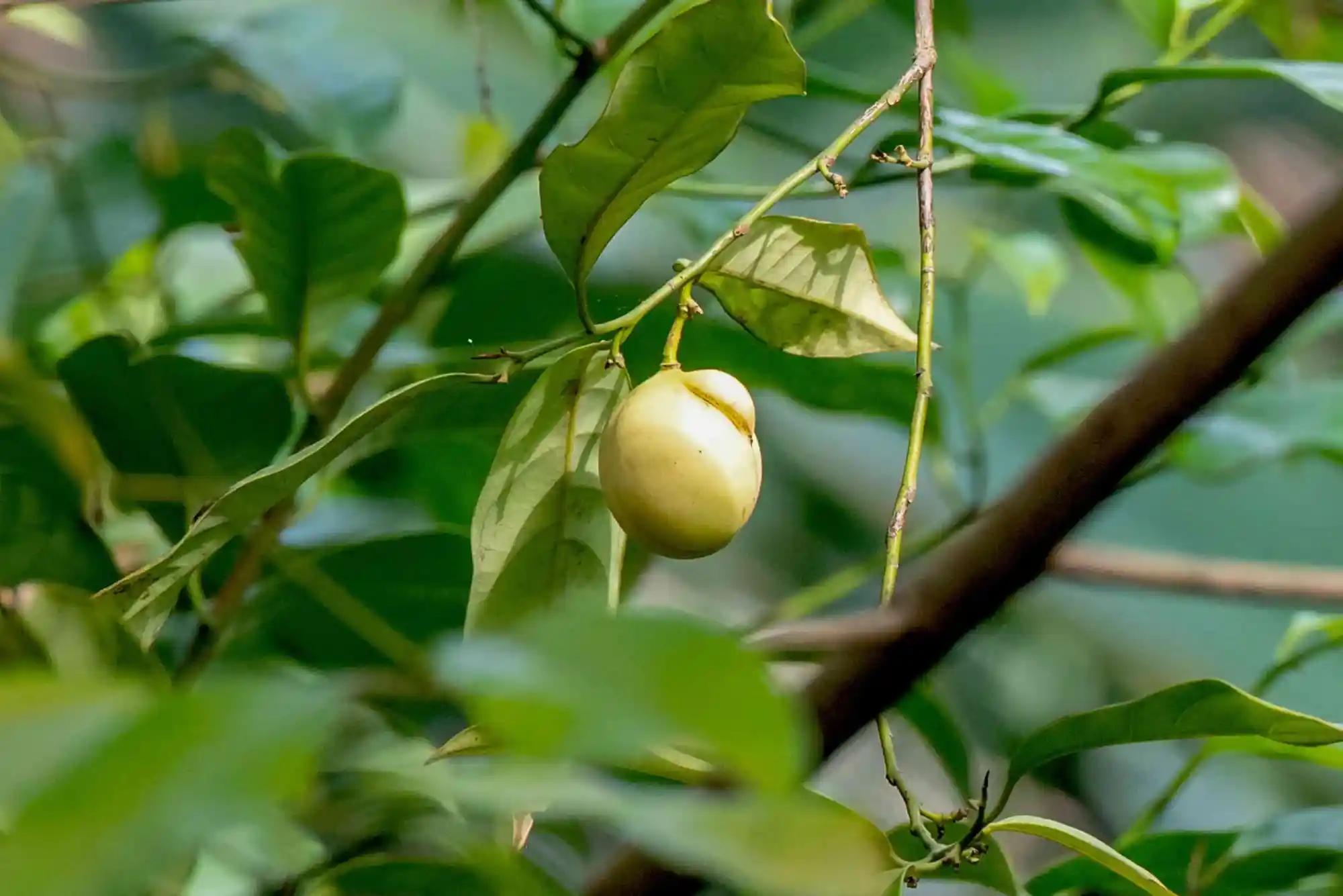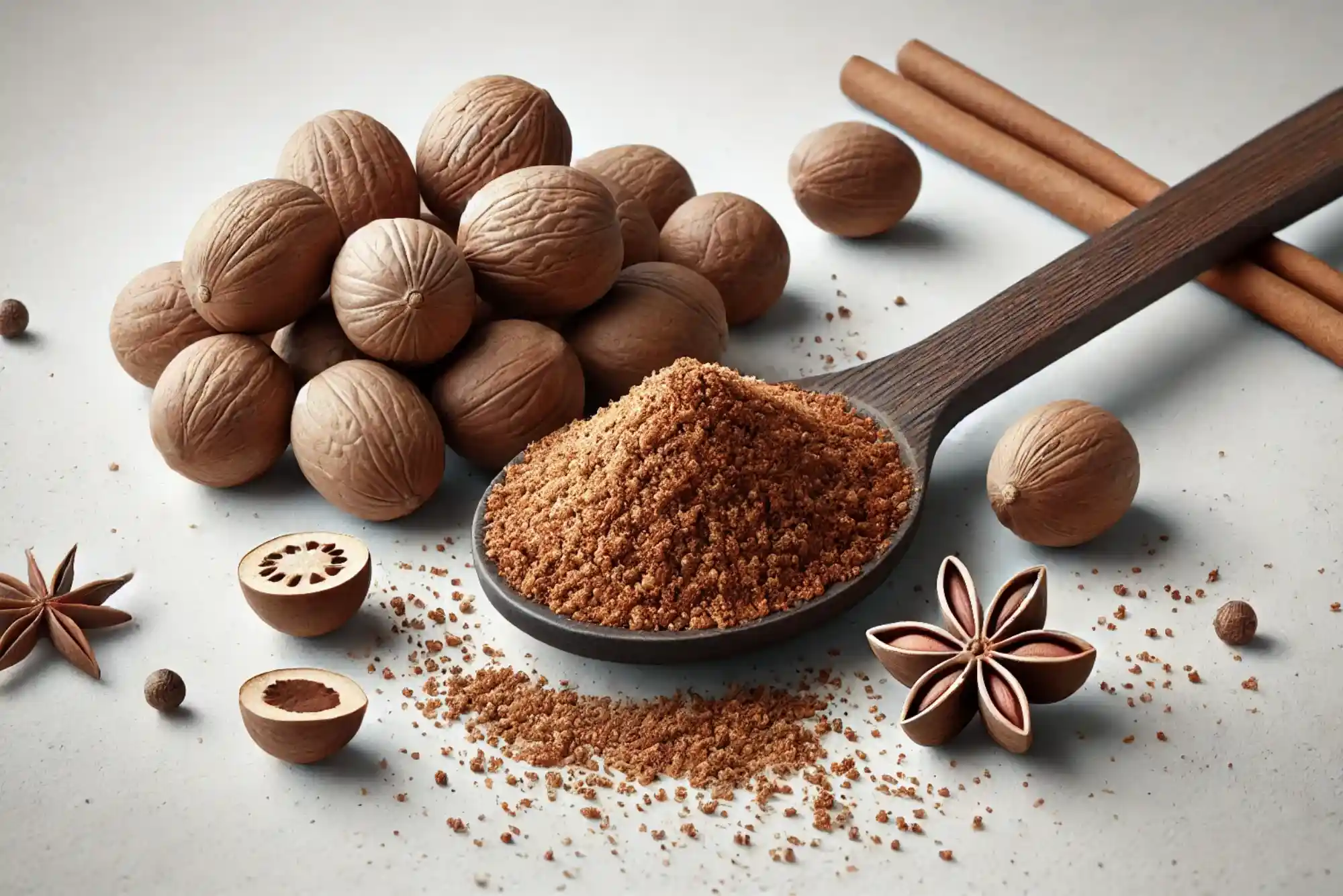Nutmeg is a widely cherished spice with a rich history, diverse uses, and significant cultural importance. This aromatic spice is derived from the seeds of the nutmeg tree (Myristica fragrans), an evergreen species native to the Banda Islands of Indonesia. Known as the “Spice Islands,” this region has been central to the history of nutmeg for centuries. The journey of nutmeg, from its origins to its role as a globally popular spice, is a story intertwined with trade, colonization, and culinary innovation.
Origins and Historical Significance
The Banda Islands, a small group of islands in the Maluku archipelago of Indonesia, are the birthplace of nutmeg. For centuries, these islands were the only source of nutmeg, making them highly valuable in the global spice trade. Traders from the Middle East, India, and China first introduced nutmeg to their regions, where it quickly became a prized commodity due to its unique flavor and presumed medicinal properties.
By the 15th and 16th centuries, European explorers and traders were captivated by nutmeg’s rarity and potential profitability. This led to intense competition among colonial powers, particularly the Dutch, Portuguese, and British, who sought control over the Banda Islands. The Dutch eventually established a monopoly on the nutmeg trade, heavily guarding the source of this lucrative spice. However, over time, nutmeg seeds were smuggled out and planted in other tropical regions, breaking the monopoly and expanding cultivation.
How Nutmeg is Grow

Nutmeg trees thrive in tropical climates with warm temperatures, high humidity, and fertile soils. The tree itself is dioecious, meaning it has distinct male and female plants. Only the female trees produce the fruit, which contains the seed we recognize as nutmeg.
The process begins with planting nutmeg seeds in nutrient-rich soil, where they take several years to mature. Once the tree starts bearing fruit, the harvest typically occurs two to three times a year. The fruit resembles an apricot or peach and splits open when ripe to reveal a seed covered in a bright red aril. This aril is dried and processed to produce mace, a spice with a flavor similar to but slightly more delicate than nutmeg. The seed itself, once dried, becomes nutmeg.
Countries such as Grenada, Sri Lanka, and India are now significant producers of nutmeg. Grenada, in particular, is often referred to as the “Island of Spice” due to its extensive cultivation of nutmeg and other spices.
Uses of Nutmeg

Culinary Applications
Nutmeg is a versatile spice that enhances a wide range of dishes. Its warm, slightly sweet flavor pairs well with both savory and sweet recipes. Popular culinary uses include:
- Baking: Nutmeg is a common ingredient in cakes, cookies, pies, and bread, adding depth to sweet treats.
- Savory Dishes: It is often used in soups, stews, and sauces, particularly in European and Middle Eastern cuisines.
- Beverages: Nutmeg is frequently sprinkled over drinks such as eggnog, chai tea, and hot chocolate, creating a cozy and aromatic experience.
Traditional Medicine
For centuries, nutmeg has been valued for its purported medicinal properties. In traditional medicine, it has been used to:
- Alleviate digestive issues, such as indigestion and nausea
- Promote relaxation and improve sleep quality
- Act as a remedy for joint pain and inflammation
While modern science continues to explore these benefits, nutmeg remains a common ingredient in herbal remedies and natural health products.
Cosmetics and Aromatherapy
Nutmeg oil, derived through steam distillation, is a popular ingredient in cosmetics and aromatherapy products. Its rich, spicy aroma is believed to promote relaxation and reduce stress. Additionally, nutmeg oil is used in skincare products for its antibacterial and anti-inflammatory properties.
Understanding Where Does Nutmeg Come From
Where does nutmeg come from? This aromatic spice originates from the seeds of the nutmeg tree (Myristica fragrans), native to the Banda Islands in Indonesia, also known as the “Spice Islands.” These islands were the sole source of nutmeg for centuries, making the spice highly valuable and sought after in ancient trade. Over time, cultivation spread to other tropical regions like Grenada and Sri Lanka, where the trees thrive in warm, humid climates. Nutmeg’s history is deeply intertwined with global exploration and trade, symbolizing its importance in both culinary and cultural contexts.
Health Benefits and Risk
Nutmeg contains essential nutrients such as manganese, copper, and magnesium, which contribute to bone health, blood sugar regulation, and antioxidant protection. Additionally, it is rich in compounds like myristicin and eugenol, which have potential anti-inflammatory and antimicrobial effects.
However, nutmeg should be consumed in moderation. Large quantities can cause toxic effects due to its high concentration of myristicin, leading to symptoms such as dizziness, hallucinations, and nausea. A pinch of nutmeg in food is safe and sufficient to enjoy its flavor and potential health benefits.
Economic and Cultural Impact
Nutmeg’s historical significance extends beyond its culinary and medicinal uses. It played a crucial role in shaping global trade routes and colonial histories. Today, nutmeg remains a valuable agricultural product, providing livelihoods for thousands of farmers in tropical regions.
Culturally, nutmeg has inspired folklore, traditional rituals, and even local economies. In Grenada, nutmeg is a symbol of national pride, appearing on the country’s flag and serving as a key export.
Nutmeg in Modern Time
With its widespread availability, nutmeg has become a staple in kitchens worldwide. Its applications have expanded into industries such as perfumery, pharmaceuticals, and food preservation. Researchers are also exploring innovative uses for nutmeg, including its potential as a natural food preservative and its role in sustainable farming practices.
Understanding where does nutmeg come from reveals a fascinating journey of history, cultivation, and global significance. From its origins in the Banda Islands to its widespread use today, nutmeg continues to enrich culinary traditions, inspire cultures, and contribute to economies worldwide. By appreciating the labor and history behind this humble spice, we can savor its aroma and flavor with a deeper sense of connection to its roots.
Customer Reviews
Maria T. – “Delicious Flavor and Versatility!”
“I absolutely love using nutmeg in my cooking! Whether it’s for baking or adding a hint of spice to savory dishes, it never disappoints. The flavor is warm and earthy, enhancing both sweet and savory recipes. Highly recommend!”
John R. – “Great Addition to My Pantry”
“Nutmeg has become a staple in my kitchen. It adds such depth to my recipes, especially in soups, stews, and desserts. Plus, I feel confident knowing it has traditional health benefits as well. A must-have spice!”
Samantha L. – “Perfect for Aromatherapy and Skincare”
“I use nutmeg oil in my homemade skincare products, and it works wonders! It has a relaxing aroma and helps with skin inflammation. Definitely a great addition for both cooking and self-care.”
David P. – “Excellent Quality and Freshness”
“I’ve tried several brands of nutmeg, but this one stands out for its freshness and rich flavor. It’s evident that the nuts come from a reputable source. Worth the investment!”
Emily K. – “Safe and Effective for Small Amounts”
“While I love nutmeg, I’ve learned to use it in moderation due to its potency. Even a small pinch adds so much flavor. Perfect for flavoring without overpowering my dishes.”
Liam J. – “Versatile Spice for Every Occasion”
“Nutmeg is a game-changer in my cooking routine! From adding it to my morning oatmeal to using it in holiday recipes, it’s a versatile spice I reach for daily. Great quality at a fair price!”
Rachel H. – “Aromatic and Enhances Flavors”
“The aroma of freshly ground nutmeg is incredible! It instantly elevates any dish, and I love using it in seasonal recipes. Highly recommended for food lovers!”
Thomas W. – “Reliable Source for Culinary Uses”
“I’ve been buying nutmeg from this supplier for years. Consistently high quality and perfect for all my culinary needs. Definitely my go-to spice!”
Sophia B. – “Health Benefits and Flavor All in One”
“Besides adding an amazing flavor, I’ve noticed some digestive benefits from using nutmeg regularly. It’s a great spice for both taste and wellness!”
Peter G. – “A Historical and Culinary Treasure”
“Nutmeg brings a piece of history to my kitchen. It’s fascinating to learn about where it comes from and how it has been a key ingredient in cuisines worldwide.”
